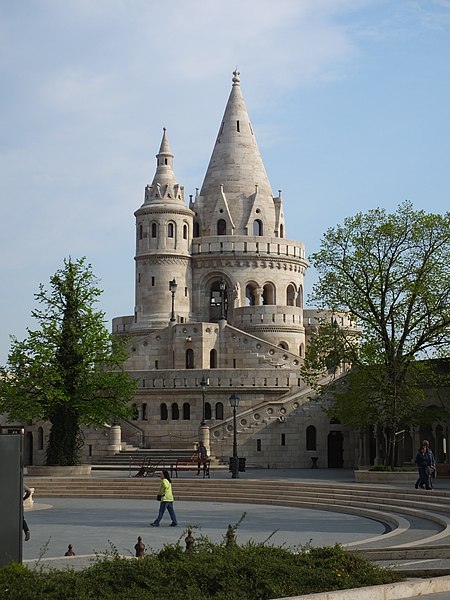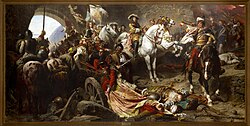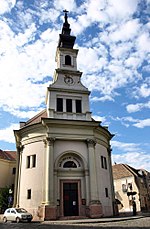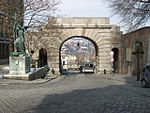Fisherman's Bastion

The Halászbástya (Hungarian pronunciation: [ˈhɒlaːzbaːʃcɒ]) or Fisherman's Bastion is one of the best known monuments in Budapest, located near the Buda Castle, in the 1st district of Budapest. It is one of the most important tourist attractions due to the unique panorama of Budapest from the Neo-Romanesque lookout terraces. The Fishermen's Bastion's main façade, parallel to the Danube, is approximately 140 meters long, of which the southern aisle is about 40 meters long, the north is 65 meters long, and the ornate central parapet is 35 meters long. Its seven high-pitched stone towers symbolize the seven chieftains of the Hungarians who founded Hungary in 895.The original walls were built in the 1700s, forming part of the walls of a castle. Several historians say that in the Middle Ages this part of the castle walls was protected by the guild of fishermen (halász), who lived under the walls in the so-called Fishtown or Watertown. The current structure was built between 1895 and 1902, in Neo-Romanesque style, on the base of a stretch of the Buda Castle walls, by architect Frigyes Schulek, who was also responsible for the restoration of the Matthias Church. Since 1987 it has been one of Budapest's World Heritage Sites as part of the Várkerület District (Buda Castle District).
Excerpt from the Wikipedia article Fisherman's Bastion (License: CC BY-SA 3.0, Authors, Images).Fisherman's Bastion
Budapest Castle District
Geographical coordinates (GPS) Address Nearby Places Show on map
Geographical coordinates (GPS)
| Latitude | Longitude |
|---|---|
| N 47.5027 ° | E 19.0344 ° |
Address
1014 Budapest, Castle District
Hungary
Open on Google Maps











